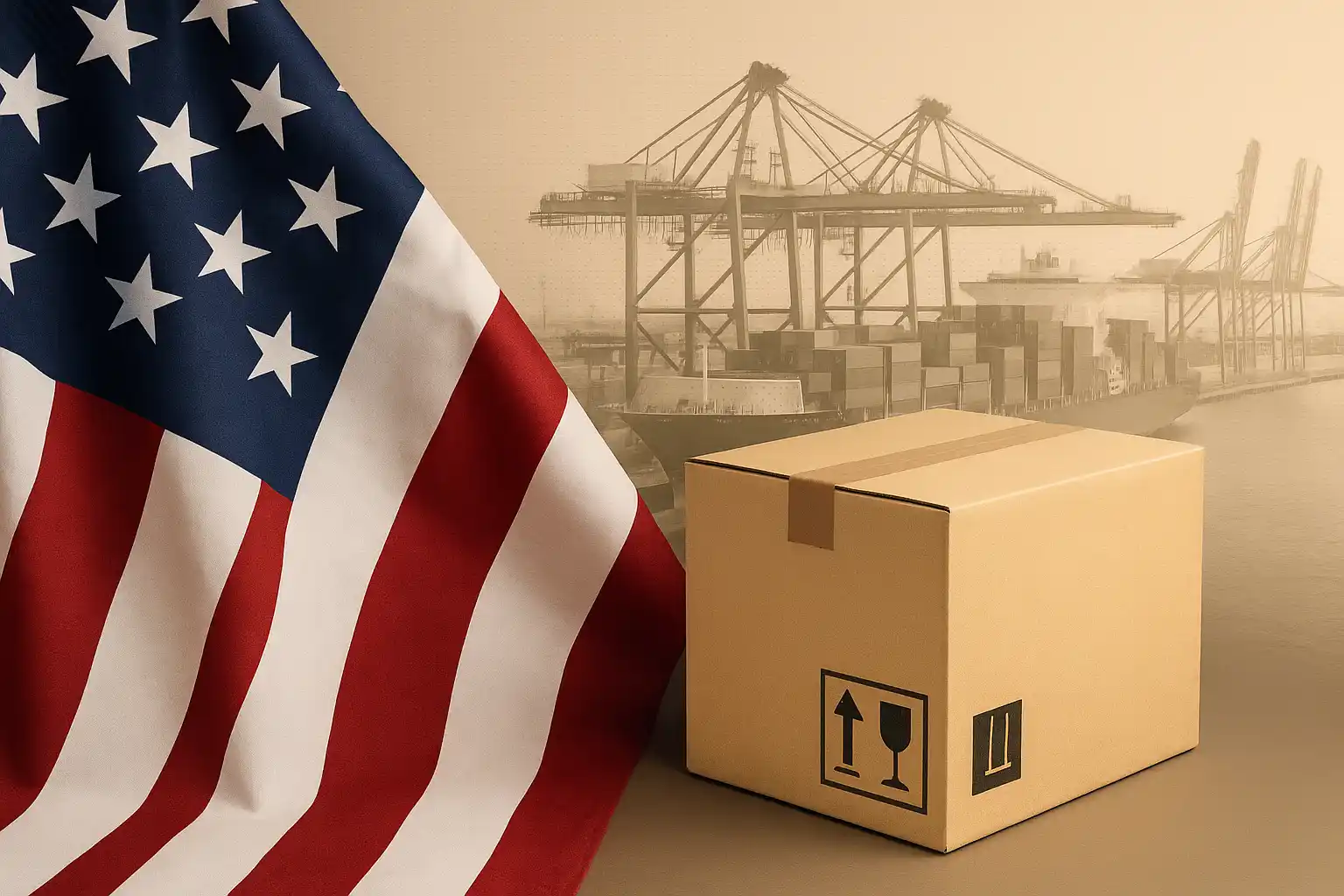Companies are now focusing more on carbon-neutral shipments. Since climate urgency is real, everyone is doing their bit to compensate for the carbon emissions they contribute to the atmosphere. But the way you compensate for your use matters. Your company must do more than plant a few trees every year and call it an effort to balance the carbon emissions. Genuine efforts are needed! And now you may ask:
But how can a business drive towards achieving fully carbon-neutral shipments?
Though the concept seems unachievable, you can steer your business in the right direction. Here's how you can do that:
4 steps to the path of carbon neutral shipments
Shipping and logistics significantly impact the environment, contributing to greenhouse gas emissions and climate change. Many businesses strive to achieve carbon-neutral shipments to address this challenge, reducing or offsetting the carbon emissions associated with their transportation and logistics activities. Achieving carbon neutrality requires a comprehensive and systematic approach, as there are many factors to consider, from raw material sourcing to final product delivery. This article will outline four essential steps businesses can take to move toward carbon-neutral shipments:
- Conducting a Scope 3 Emissions Assessment
- Breaking down the numbers into achievable goals
- Partnering with other companies
- Obtaining certifications
By following these steps, businesses can reduce their environmental impact, gain a competitive edge, and contribute to a more sustainable future.
1. Start by conducting a detailed Scope 3 Emissions Assessment
One of the most critical steps towards achieving carbon-neutral shipments is conducting a Scope 3 Emissions Assessment. Scope 3 refers to all indirect emissions associated with a company's activities, including emissions from suppliers, transportation, and distribution. For businesses that rely on shipping and logistics, Scope 3 emissions are likely to be a significant contributor to their carbon footprint.
Conducting a Scope 3 Emissions Assessment involves analyzing all the activities contributing to the carbon emissions associated with a company's logistics and transportation processes. This includes factors such as the transportation of raw materials, manufacturing processes, shipping, and distribution of finished goods. By analyzing these factors, businesses can identify the most significant sources of carbon emissions and develop strategies to reduce or offset them.
While conducting a Scope 3 Emissions Assessment is critical, it can also be challenging and complex. It may require working with third-party consultants or using specialized tools and software to gather and analyze data. Nevertheless, by conducting a thorough assessment, businesses can gain valuable insights into their environmental impact and develop a roadmap toward achieving carbon neutrality.
2. Break down the numbers into achievable goals
Once a Scope 3 Emissions Assessment has been conducted, businesses can break down the numbers into achievable goals. By analyzing the data, businesses can identify which areas of their logistics and transportation processes are responsible for the most carbon emissions. They can then set achievable goals for reducing or offsetting these emissions.
The first step towards achieving carbon-neutral shipments is to focus on reducing emissions where possible. This may involve changing the supply chain, such as sourcing raw materials locally or using more sustainable materials. It may also involve optimizing transportation routes and modes, such as using more efficient vehicles or alternative modes of transportation, such as rail or sea freight.
In some cases, it may not be possible to reduce emissions further through changes to the logistics and transportation processes. In these cases, businesses may need to consider offsetting their emissions by investing in renewable energy projects or purchasing carbon credits.
When setting achievable goals, businesses should ensure they are realistic and measurable. This may involve setting specific targets for reducing carbon emissions, such as a percentage reduction in emissions per shipment or a target for the use of renewable energy sources. It may also involve establishing a timeline for achieving these goals and regularly reviewing their progress.
While reducing carbon emissions may involve additional costs, it can also bring benefits such as increased efficiency, reduced waste, and improved brand reputation. By breaking down the numbers into achievable goals, businesses can take concrete steps towards achieving carbon-neutral shipments while also realizing these benefits.

3. Get into a partnership with companies trying to achieve carbon-neutral status
Partnering with other companies striving towards carbon neutrality can help businesses reduce their carbon footprint and achieve their sustainability goals more effectively. By collaborating with like-minded organizations, businesses can share best practices, knowledge, and resources to drive sustainable change across the supply chain.
Businesses can reduce the environmental impact of their transportation and shipping processes by choosing sustainable logistics partners. One way to partner with other companies is to work with logistics providers already adopting sustainable practices. For example, businesses can choose transportation companies that use electric or hybrid vehicles or have invested in biofuels.
Another way to partner with companies is to collaborate with suppliers committed to reducing their carbon footprint. This can help businesses reduce their Scope 3 emissions and promote sustainable practices throughout their supply chain. By working with suppliers who prioritize sustainability, businesses can ensure that their raw materials and products are produced and transported in an environmentally responsible way.
In addition to logistics and suppliers, businesses can partner with sustainability consultants, nonprofit organizations, and industry associations to gain insights and knowledge on sustainable practices. These partnerships provide access to expertise, funding, and other resources that can help businesses achieve their sustainability goals more effectively.
Overall, partnering with other companies and organizations is an essential step toward achieving carbon-neutral shipments. By working together, businesses can drive sustainable change and positively impact the environment.
4. Get your proof of the sustainable activities your company has undertaken
Once a business has implemented sustainable practices and achieved carbon-neutral shipments, showcasing these efforts to stakeholders is essential. One way to demonstrate sustainability efforts is to obtain certifications from reputable green authorities.
Several certifications are available that businesses can apply for to demonstrate their commitment to sustainability, including LEED, B Corp, and ISO 14001. These internationally recognized certifications demonstrate that a business has met specific environmental standards and undergone an independent review process.
Certification can help businesses build trust with customers, investors, and other stakeholders by providing evidence of their commitment to sustainability. These certifications can also help businesses differentiate themselves from competitors and gain a competitive advantage.
In addition to obtaining certifications, businesses can use other communication channels to showcase their sustainability efforts. This can include publishing sustainability reports, participating in industry events and forums, and engaging with customers and stakeholders on social media and other platforms.
Overall, obtaining proof of sustainable activities is crucial to achieving carbon-neutral shipments. Businesses can build trust with stakeholders, gain a competitive advantage, and promote a more sustainable future by showcasing their sustainability efforts.
Conclusion
In conclusion, achieving carbon-neutral shipments is a complex and challenging task that requires a comprehensive and systematic approach. Businesses can take concrete steps towards achieving carbon neutrality and reducing their environmental impact by conducting a Scope 3 Emissions Assessment, breaking down the numbers into achievable goals, partnering with other companies, and obtaining certifications.
Although it may involve additional costs and resources, the benefits of carbon-neutral shipments are significant. It can help businesses reduce their environmental impact, build brand reputation, and gain a competitive edge in the marketplace. Furthermore, it can contribute to a more sustainable future by reducing greenhouse gas emissions and promoting sustainable practices throughout the supply chain.
As businesses continue to face increasing pressure to reduce their environmental impact, achieving carbon-neutral shipments is essential to sustainable business practices. By following the steps outlined in this article, businesses can take a proactive and meaningful approach to achieving their sustainability goals and positively impacting the environment.

.webp)



